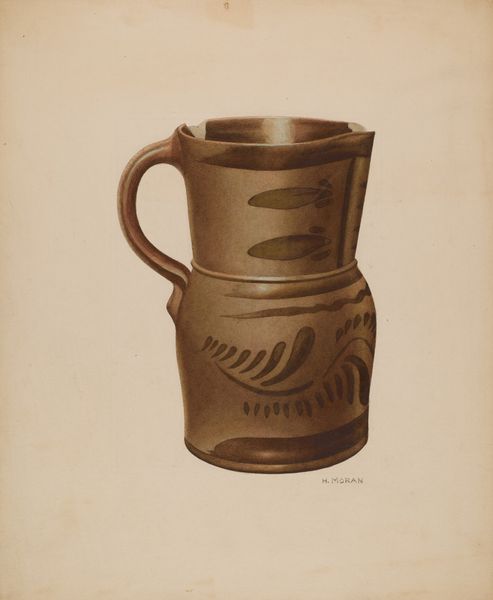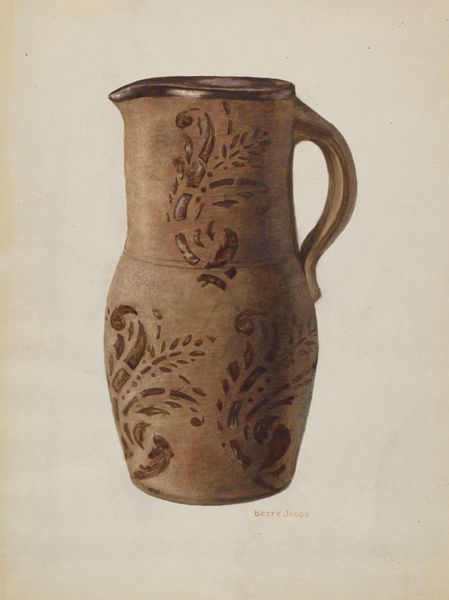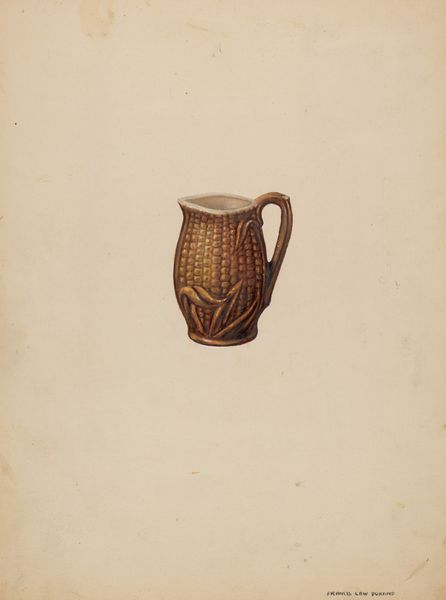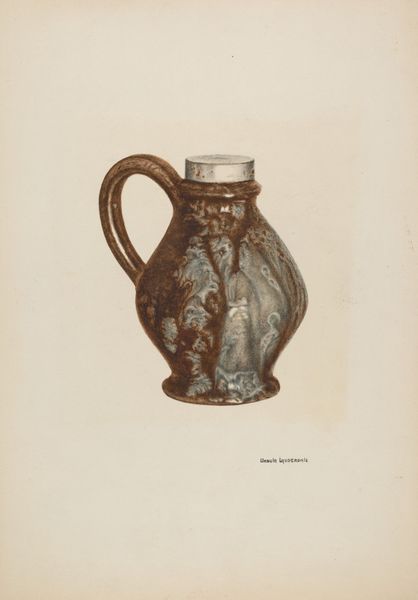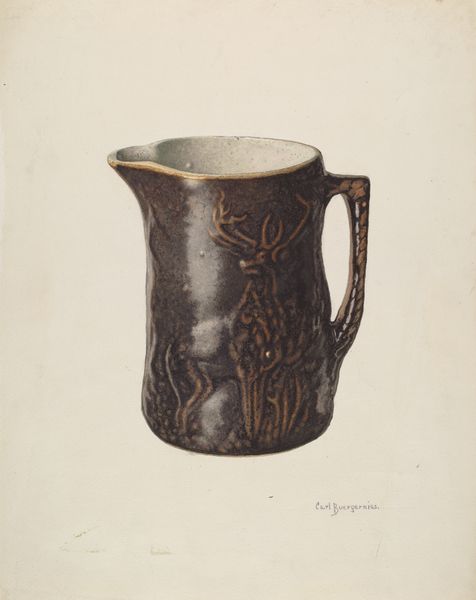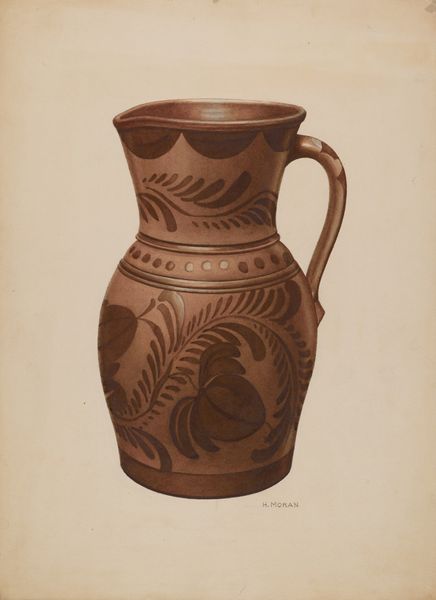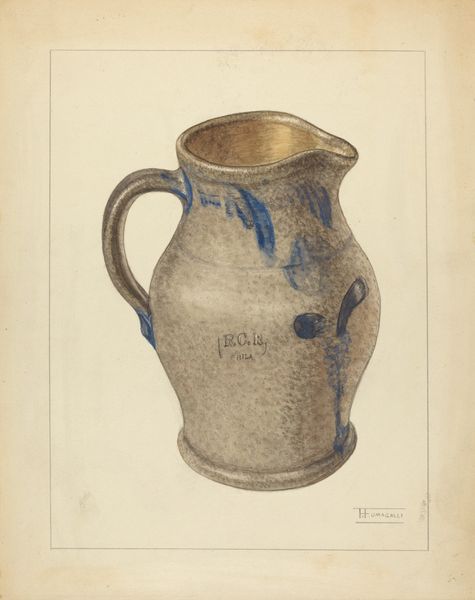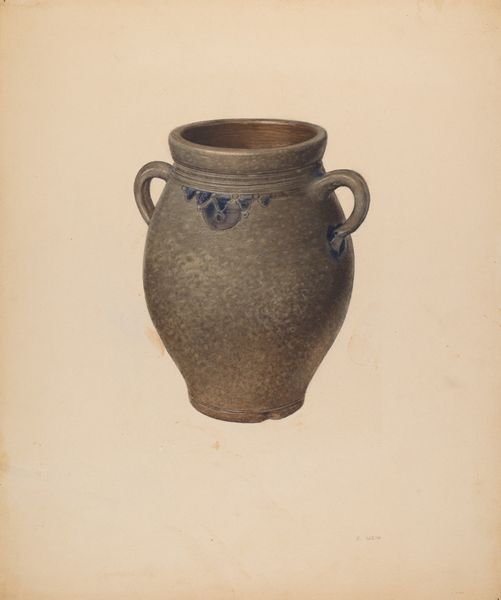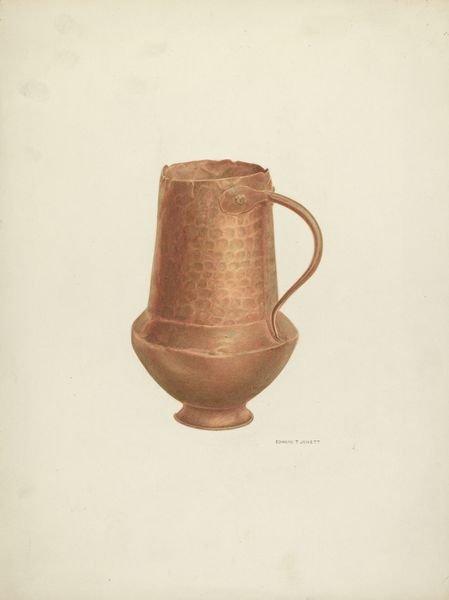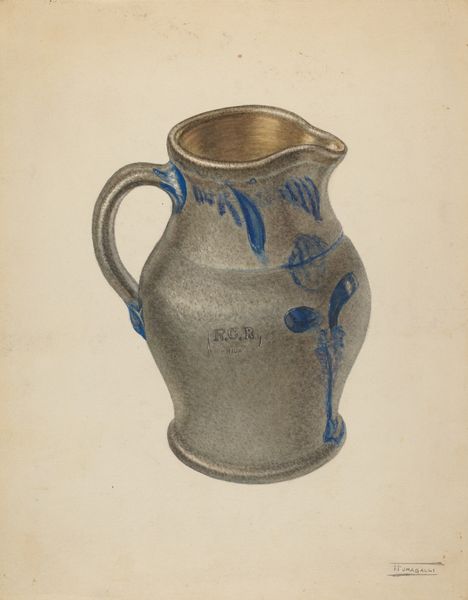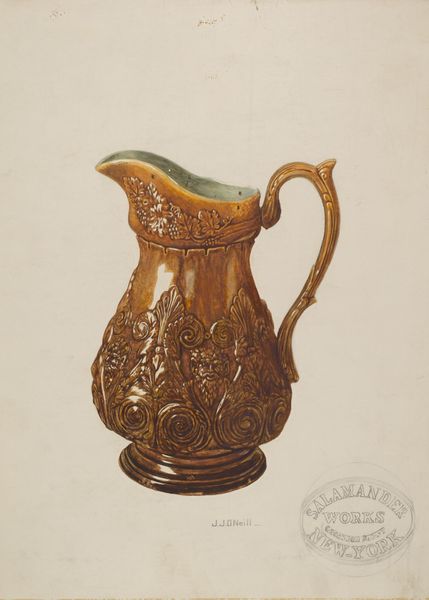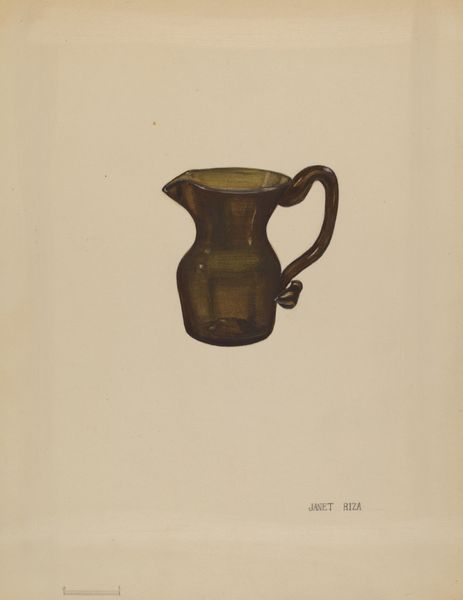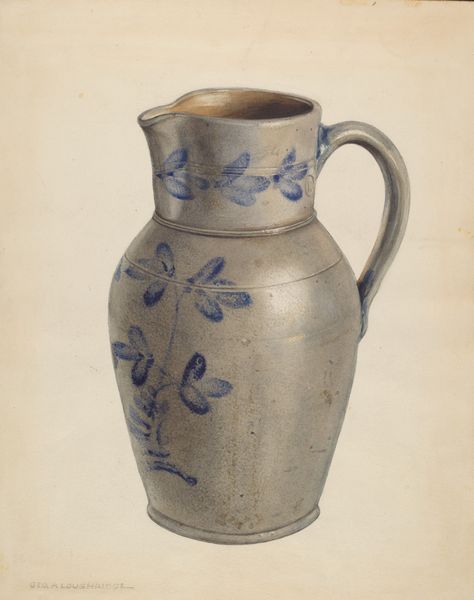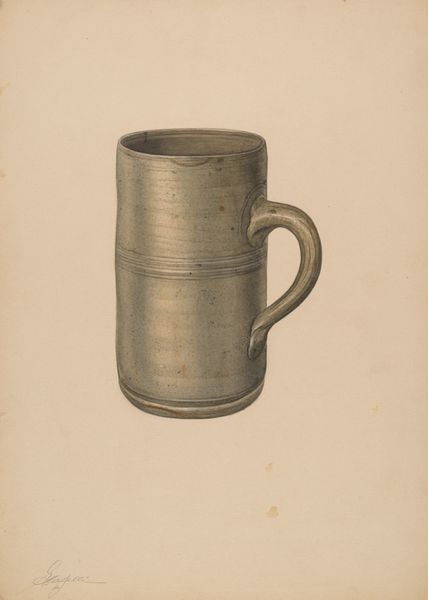
drawing, watercolor
#
drawing
#
charcoal drawing
#
oil painting
#
watercolor
#
watercolour illustration
#
academic-art
#
watercolor
#
realism
Dimensions: overall: 44.6 x 35 cm (17 9/16 x 13 3/4 in.) Original IAD Object: 9 3/16 High 5 1/4 Dia(base)
Copyright: National Gallery of Art: CC0 1.0
Curator: Welcome. Today, we're looking at Carl Buergerniss's "Pitcher" from 1940, executed in watercolor. Editor: It has a grounded, almost folksy feel, doesn’t it? That muted palette lends it an air of utility rather than ornamentation. Curator: Buergerniss was part of a wave of artists deeply interested in depicting everyday objects. Examining this, the application of watercolor simulates the texture of ceramic quite effectively. He uses layers to mimic depth and weight, emphasizing the craftsmanship involved in pottery making. What social contexts might elevate the mundane to high art during this time? Editor: Perhaps a desire to find beauty in the simplicity of domestic life during a period of upheaval. The 1940s were a time of great social and political change; maybe showcasing a humble pitcher provided a sense of stability. It's interesting how museums contribute to our understanding of 'high' and 'low' art by selectively exhibiting works like this. Curator: Precisely. The rise of industrial production threatened traditional crafts. Representing something like a handmade pitcher, especially rendered with meticulous skill in watercolor, serves to preserve a sense of value tied to pre-industrial techniques. It's a commentary on labor. How do the material choices relate to our contemporary perception? Editor: It does present questions about consumption and worth. The inclusion of grape motifs suggests abundance and celebration, common symbolism even today, especially when serving at dinner parties. The artist might have aimed to promote particular ideologies tied to class and society via art. Curator: That connection to class and social practices, the ways we attach value to specific items based on socio-cultural expectations - those all circle back to the historical narrative within these galleries. Editor: Absolutely. These glimpses into the past encourage reflection and offer profound implications to our current culture. Curator: Well, exploring how something so commonplace opens pathways for deeper discussions, highlighting production and material processes of our shared society, is incredibly enlightening. Editor: Agreed.
Comments
No comments
Be the first to comment and join the conversation on the ultimate creative platform.
